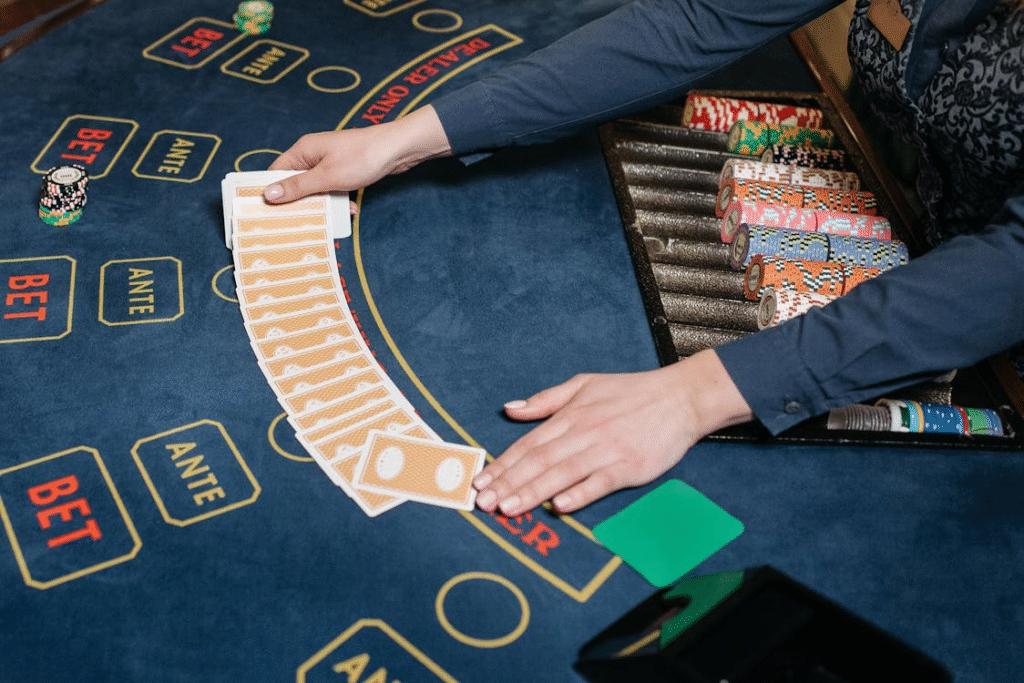In the world of modern poker, the line between winning and losing can be as thin as a single bet. Over the years, poker has evolved from a simple card game to a high-stakes battle of wits, psychology, and strategy. One of the most significant shifts in this evolution has been the growing importance of aggression in poker play. In this article, we’ll dive deep into how aggression shapes modern poker games, from bluffs to all-ins, and explore why this fiery approach is essential to success.
Also Read: How to Survive the WSOP Grind: Mindset, Nutrition & Pro-Level Habits

Understanding Aggression: More Than Just Raising Bets
Aggression in poker is often misunderstood. For many, it’s synonymous with reckless betting, but seasoned players know that aggressive poker is all about asserting control over the table, forcing opponents into difficult positions, and dictating the pace of the game. Aggression is not just about big bets or bluffing your way to victory; it’s about strategically manipulating your opponents’ mindset and playing in a way that maximizes your own opportunities.
There are two primary ways aggression is applied in modern poker:
- Aggressive Betting: This is when a player raises or re-raises bets frequently, putting pressure on their opponents. By doing so, they force others to make tough decisions, often pushing them out of the hand or into a situation where they must play more cautiously.
- Bluffing: This is the art of pretending to have a stronger hand than you do. While bluffing can be risky, when done correctly, it becomes a powerful tool in an aggressive player’s arsenal.

Aggression and Modern Poker Strategy
In today’s game, particularly in No-Limit Texas Hold’em, aggression is often seen as the defining trait of a winning strategy. It’s not just about throwing chips into the pot; it’s about controlling the narrative of the game and using aggression as a means to manipulate the flow. Here’s why:
- Building a Tight Image: Aggressive players often create the impression that they only play strong hands. When they do choose to enter a hand, their opponents tend to respect their bets. This gives them the upper hand in the game as they can then mix in bluffs, knowing that opponents will be less likely to challenge them.
- Force Weak Players to Fold: By being aggressive, you force weaker players to fold, especially when you have a solid hand. Weak players often cannot handle the pressure of aggressive betting, and this gives you the chance to scoop pots without too much competition.
- Maximizing Value: When you do have a strong hand, aggressive betting allows you to extract as much value as possible from your opponents. By raising early or making big bets, you’re ensuring that the pot grows, and you gain more when your hand wins.

The Psychological Edge of Aggression
At the heart of aggressive poker is psychology. Playing aggressively doesn’t just involve managing chips and cards; it’s about managing minds. By being unpredictable, aggressive players make it difficult for their opponents to read their hands. This unpredictability plays into the mental warfare of poker, where calm, calculated decisions often outweigh the value of a good hand.
- Pressure on Opponents: One of the key psychological aspects of aggression is that it constantly keeps your opponents on edge. They’ll have to think twice before calling your bets, second-guessing whether you’re bluffing or really holding a monster hand.
- Dealing with Traps: Aggression can also set up traps. Skilled aggressive players know when to slow down the action and check, lulling their opponents into a false sense of security. When the time is right, they pounce with an aggressive bet, catching their opponents off guard.
When Aggression Goes Wrong: Knowing When to Back Off
As with any strategy, over-aggression can lead to disastrous results. It’s important for poker players to recognize when to dial back the aggression and play conservatively. Here are some signs that your aggression might be getting the best of you:
- Overcommitting to a Hand: Aggression becomes a problem when a player continues betting aggressively on a weak hand. Over-betting without the proper backing can deplete your stack quickly.
- Bluffing Too Often: A good bluff is a rare and valuable tool, but too many bluffs can make you predictable. If opponents catch on to your patterns, they will start calling your bluffs, draining your resources.
- Underestimating the Opponent: Aggression is most effective when applied against weaker or less experienced players. Against more skilled opponents, your aggression could backfire if they know how to counter it effectively.
Also Read: 5 Types of Poker Players You Meet at Every Home Game

The Future of Aggression in Poker
With the rise of online poker and the increasing popularity of live-streamed tournaments, the role of aggression in poker is only going to grow. Professional players are continuously honing their skills to become better psychologists and strategists in addition to mastering the mechanics of the game.
As poker evolves, the balance between aggression and patience will continue to shift. Players will need to stay agile and constantly adapt their aggression to counter evolving strategies. What was considered an aggressive move a decade ago may not have the same impact today, especially as opponents become more sophisticated and strategic.


6 Comments
Pingback: Haoyu Wang Claims First Live Title in $4K NLH High Roller
Pingback: Brandon Mitchell Wins 2025 Arizona State Poker Championship
Pingback: APT Jeju 2025: $3.4M Poker Festival
Pingback: Sergio Aido Wins PGT Bounty Blitz Final
Pingback: Boost Your Poker Game with Engaging Talks
Pingback: Kayhan Mokri Redeems Himself With $1.2 Million Win Over ‘LUKAKU’ in 5-Card PLO Clash